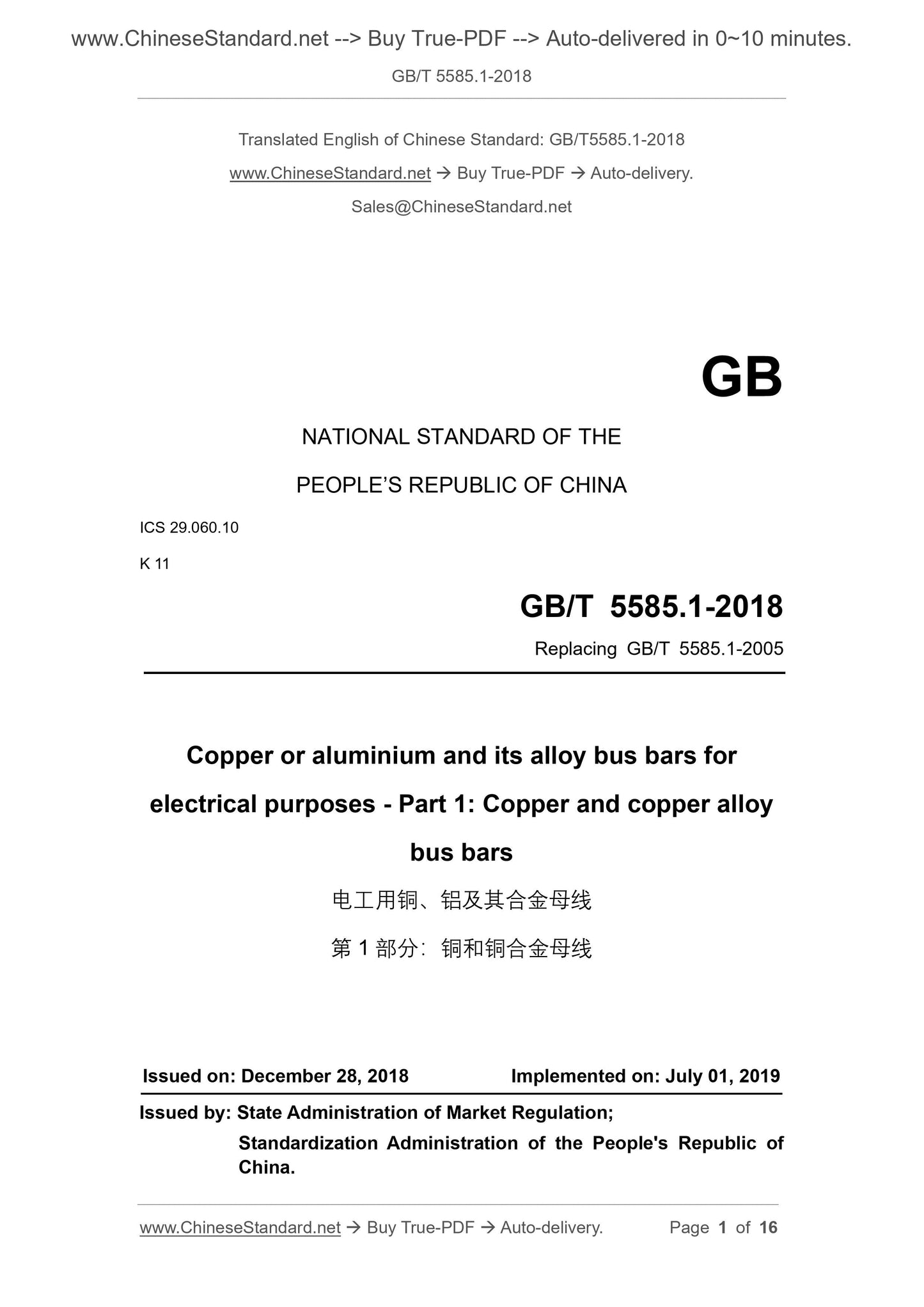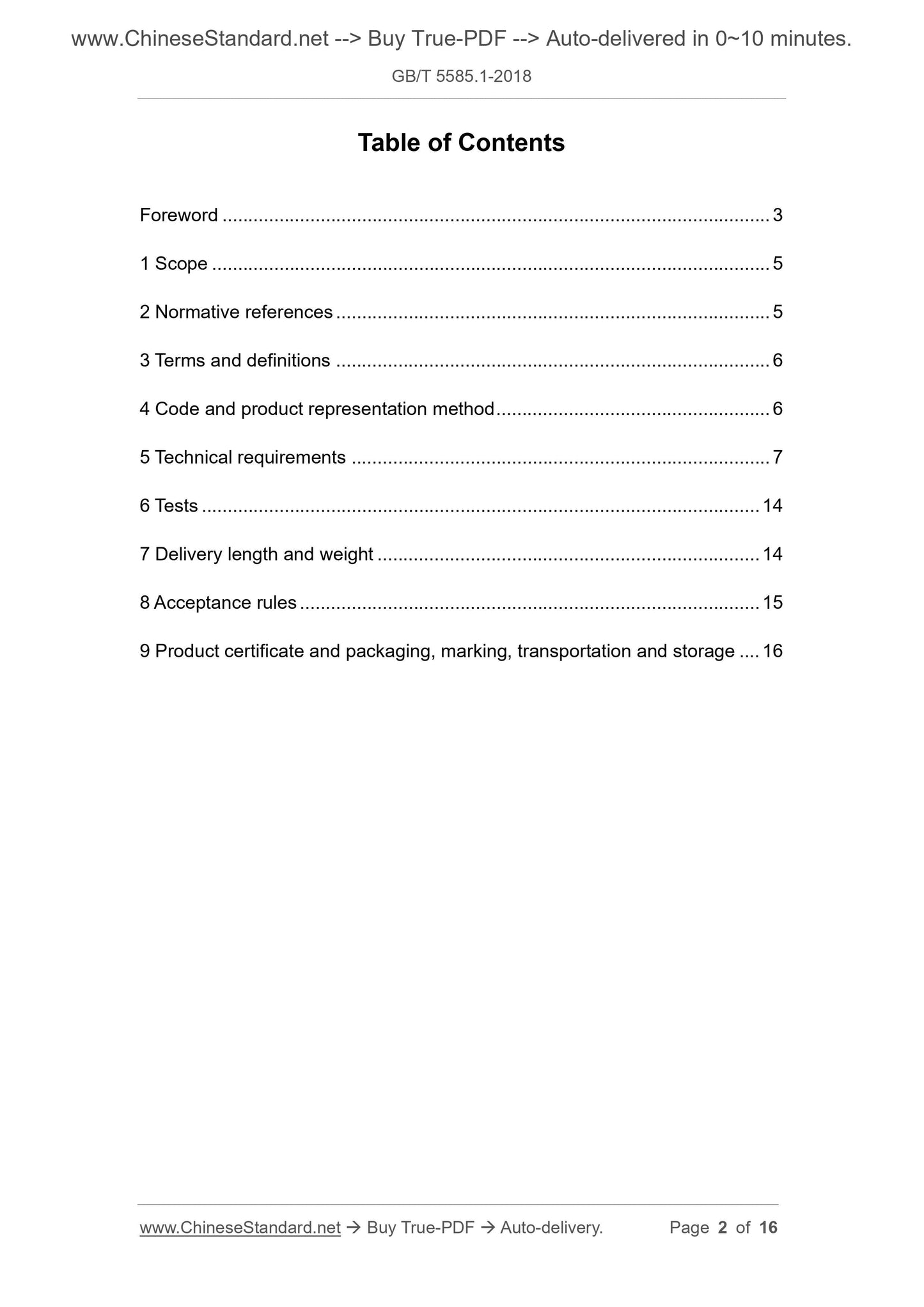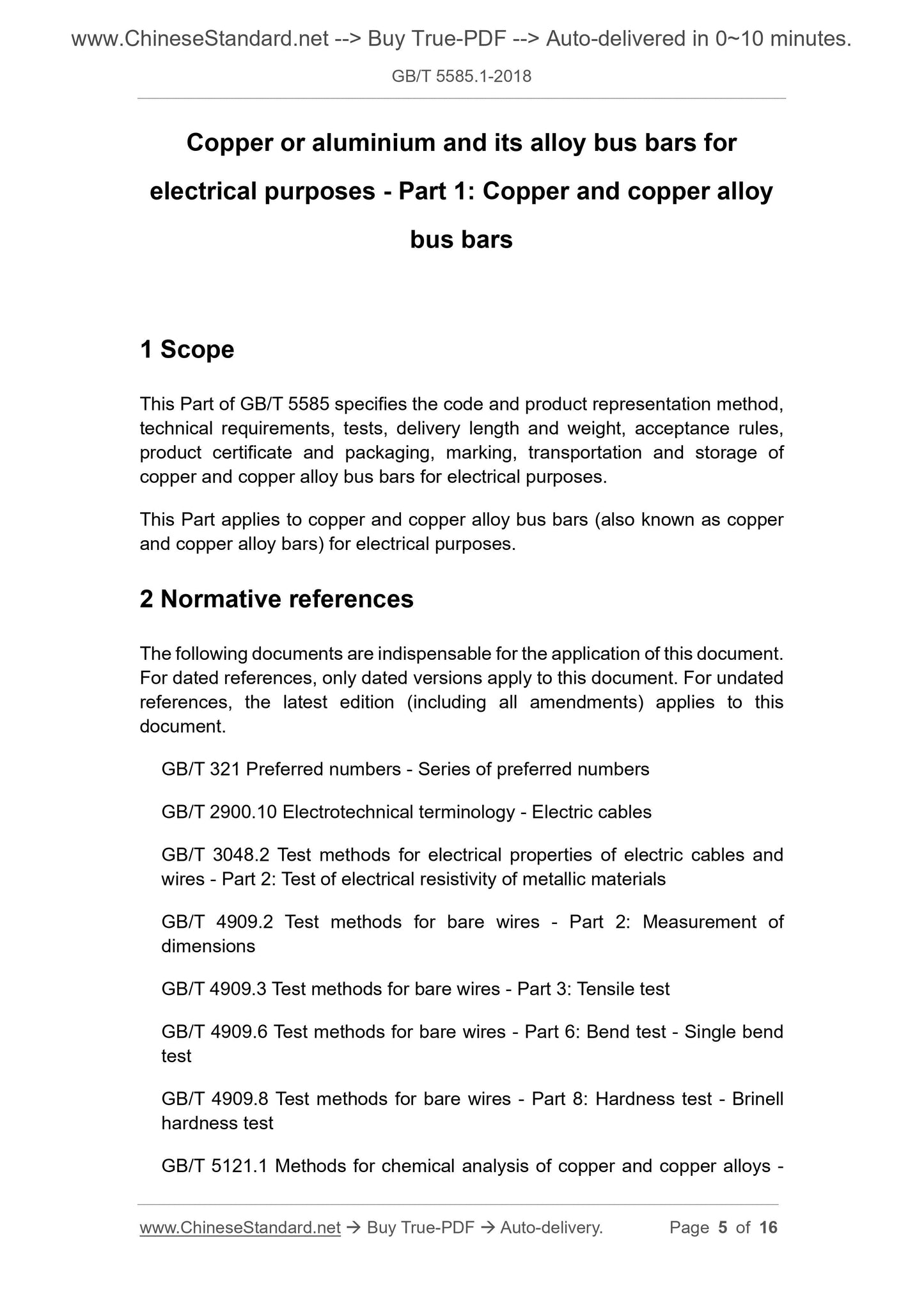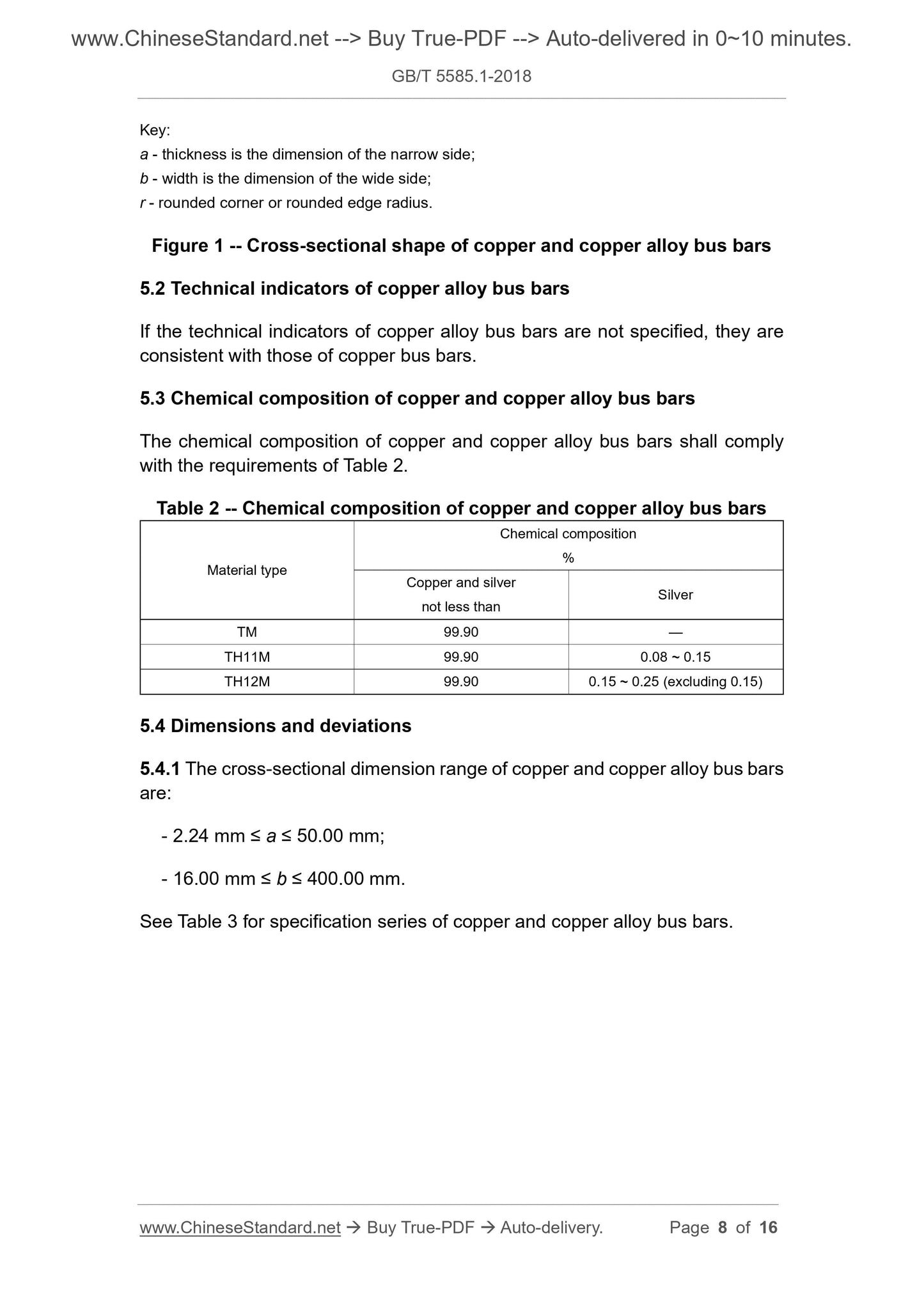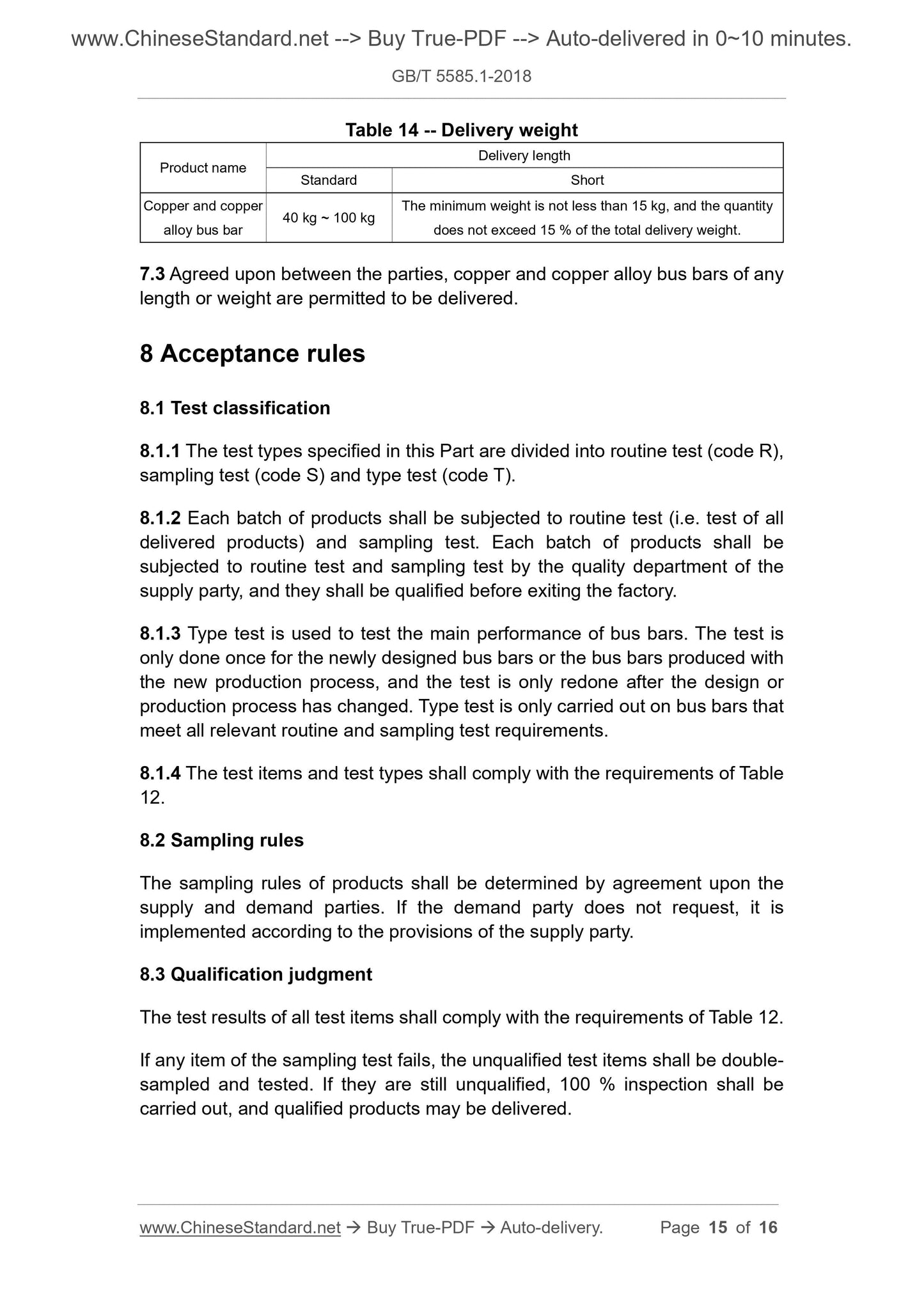1
/
of
5
www.ChineseStandard.us -- Field Test Asia Pte. Ltd.
GB/T 5585.1-2018 English PDF (GB/T5585.1-2018)
GB/T 5585.1-2018 English PDF (GB/T5585.1-2018)
Regular price
$145.00
Regular price
Sale price
$145.00
Unit price
/
per
Shipping calculated at checkout.
Couldn't load pickup availability
GB/T 5585.1-2018: Copper or aluminium and its alloy bus bars for electrical purposes - Part 1: Copper and copper alloy bus bars
Delivery: 9 seconds. Download (and Email) true-PDF + Invoice.Get Quotation: Click GB/T 5585.1-2018 (Self-service in 1-minute)
Newer / historical versions: GB/T 5585.1-2018
Preview True-PDF
Scope
This Part of GB/T 5585 specifies the code and product representation method,technical requirements, tests, delivery length and weight, acceptance rules,
product certificate and packaging, marking, transportation and storage of
copper and copper alloy bus bars for electrical purposes.
This Part applies to copper and copper alloy bus bars (also known as copper
and copper alloy bars) for electrical purposes.
Basic Data
| Standard ID | GB/T 5585.1-2018 (GB/T5585.1-2018) |
| Description (Translated English) | Copper or aluminium and its alloy bus bars for electrical purposes - Part 1: Copper and copper alloy bus bars |
| Sector / Industry | National Standard (Recommended) |
| Classification of Chinese Standard | K11 |
| Classification of International Standard | 29.060.10 |
| Word Count Estimation | 14,172 |
| Date of Issue | 2018-12-28 |
| Date of Implementation | 2019-07-01 |
| Older Standard (superseded by this standard) | GB/T 5585.1-2005 |
| Issuing agency(ies) | State Administration for Market Regulation, China National Standardization Administration |
Share
